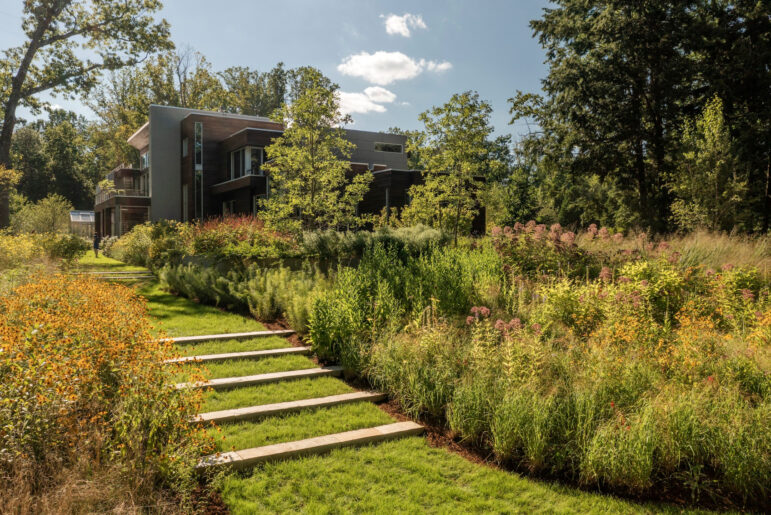Written by Myra Klockenbrink
The Sustainability Committee of the Town of Greenwich is launching a weekly series of articles on the importance of biodiversity and how each of us can contribute to it. This series, “One Land.” is sister to our “One Water.” series printed last year.

The environmental news can get hard to hear — monstrous storms, killing floods, fires sweeping into communities and burning them to the ground, tornadoes ripping through multiple states. People losing everything and counting themselves lucky because they got out of it alive. Even locally we’ve experienced terrible devastation from Hurricane Ida with massive amounts of rain pouring from the sky in the space of minutes. Many residents are still digging their way out of the damage of September 1, 2021.
We look to our governments, our scientists and institutions and it often seems they are as overwhelmed as we are. We see that whatever the policy it never seems like it is enough of an answer to what feels like insurmountable challenges. What can we do to prepare ourselves, much less make much of a difference?
The answer may be right in your backyard or your front lawn. Most suburban dwellers have a bit of lawn, some foundation plantings and a few flowerbeds. Urban residents have handkerchief gardens, tree wells and window boxes. Each of these spaces can be co-opted to yield nature’s most powerful force — biodiversity. Biological diversity is the engine of life. It is what gave the land its green coat of forests and grasslands. It is what stocked the oceans and rivers with a multiplicity of organisms, some invisible to the human eye, others the size of an airliner, millions of species in all.
That same engine is being compromised by the many toxins that are the offshoots of human activity, our seemingly insatiable need for land and natural resources, the warming climate and the encroachment of invasive species. We are losing species at a scary pace and scientists say we are in the midst of the sixth great extinction that will wipe out as much as 75 percent of all life forms.
Whew. That’s a lot to take in. Let’s go back to our yards where the greenery, trees and plantings relax and restore us. They are the key to a different kind of response to our challenges. Our yards, our lawns, our trees, the plants we husband all present an opportunity to increase and drive biodiversity.
“One Land.” — sister to “One Water.” — will dive into this potential in a series of upcoming articles that have us look at our use of lawn chemicals, the plants we use that escape our yards and become pests in the broader landscape, the very idea of lawn as the epitome of American landscape design. We will look at native trees and their peerless function as drivers of biodiversity with their flowers and fruits, but also with their roots. We are learning how critical the health of the soil is to the subterranean world of organisms that feed on the carbon our trees draw down from the atmosphere. Our backyards can not only become refuges of great diversity, but also a place to sink the carbon built-up that is over-charging our weather.
If all this sounds small — it is. But we got to the edge of all life the same way: one human step at a time. Each of us has the capacity to effectively join hands with our neighbors and restore the fragments of the landscape that are our yards and create a great continuous biodiverse quilt for our other neighbors — the wildlife our way of life depends upon.
Look for the first article in our five-part series, “The Grass Isn’t Always Greener” How our obsession with lawns turned toxic on Thursday.